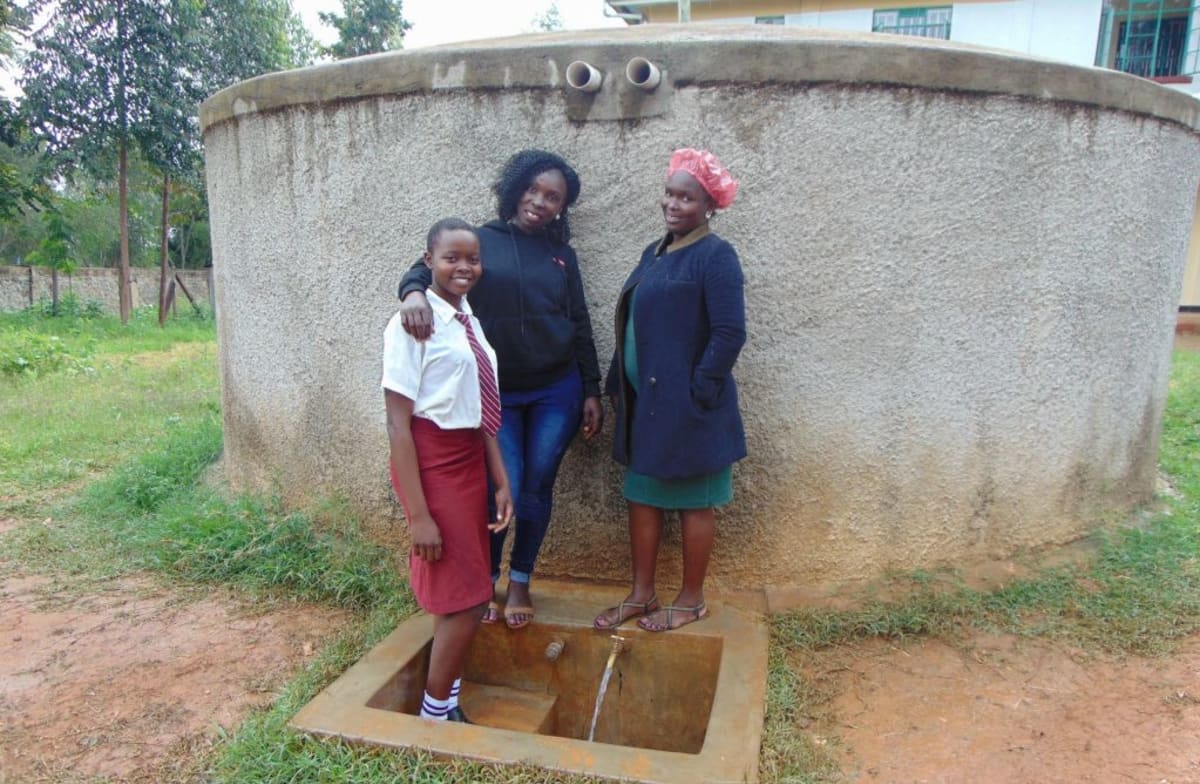Shikhondi Girls Secondary School is situated along the Kakamega-Chavakali road. It was established in the year 2014 with a population of 46 students. The school was registered as a boarding school, but unfortunately operates only as a day school due to lack of adequate facilities and resources - one of which is enough safe, clean water. A typical day begins at 6:45am and classes end at 4pm, after which there are games, clubs and societies with cleaning the school compound ending at 5pm.
What a long day!
Sometimes, the students have to take their classes in the principal's office. The classrooms, staffroom and principal's office are iron sheet makeshifts which get too hot during the summer season. Most the students are those who qualified to get admission into schools rated as national schools in the country, but since their parents can’t afford to pay the requirements for such schools, the girls are enrolled here. Shikhondi Secondary School is a fast-growing school with a current population of 280 students. The future for this school is promising! They just need more clean water.
Water
The main water source for the school is a small plastic rainwater catchment tank. There is also a spring - at a distance from the school - and intermittent, unreliable piped water. All three of these points together is not enough for the school to take on more students next year, never mind have them board there, also.
Students draw water from the plastic water tank and the protected spring using cups, buckets, and jerrycans. The amount of water this plastic tank can hold is no greater than 10,000 liters, which is used up quickly. The piped water - which is so unreliable and costly - is fetched at a tap in the school compound. With a high chance that both taps will yield no water, these girls have to take up their jerrycan and go out into the community to search for an alternative.
These girls and their teachers are in need of a reliable clean water source on school grounds. Without it, they are at risk of a closure notice issued by the local government.
Sanitation
The ten latrines that these girls use actually belong to the primary school. They are dilapidated, and some don't even have doors and others have crumbling walls.
"Our children are facing a risk every day because they are using latrines that are even sinking. Not having hand washing facilities in our school has contributed to stomachache complaints amongst our students since they don't wash their hands after visiting the latrines and even before eating," Principal Violet Musotsi commented.
Here's what we're going to do about it:
Training
Training will be held for two days. The facilitator will use PHAST (participatory hygiene and sanitation transformation), ABCD (asset-based community development), CTC (child to child), lectures, group discussions, and handouts to teach health topics and ways to promote good practices within the school. The CTC method will prepare students to lead other students into healthy habits, as well as kickstart a CTC club for the school.
Hand-Washing Stations
The CTC club will oversee the new facilities, such as hand-washing stations, and make sure they are kept clean and in working condition. The two hand-washing stations will be delivered to the school, and the club will fill them with water on a daily basis and make sure there is always a cleaning agent such as soap or ash.
VIP Latrines
Two triple-door latrines will be constructed with local materials that the school will help gather. And with a new source of water on school grounds, students and staff should have enough to keep these new latrines clean.
Rainwater Catchment Tank
A 50,000-liter rainwater catchment tank will help alleviate the water crisis at this school. The school will also help gather the needed materials such as sand, rocks, and water from the spring for mixing cement. Once finished, this tank can begin catching rainfall that will be used by the school’s students and staff.
We and the school strongly believe that with this assistance, standards will significantly improve. With clean water and high standards of cleanliness, students’ good health will give them the chance to earn better grades and live a better life.
This project is a part of our shared program with Western Water And Sanitation Forum (WEWASAFO). Our team is pleased to provide the reports for this project (formatted and edited for readability) thanks to the hard work of our friends in Kenya.

 Rainwater Catchment
Rainwater Catchment
 Rehabilitation Project
Rehabilitation Project








































